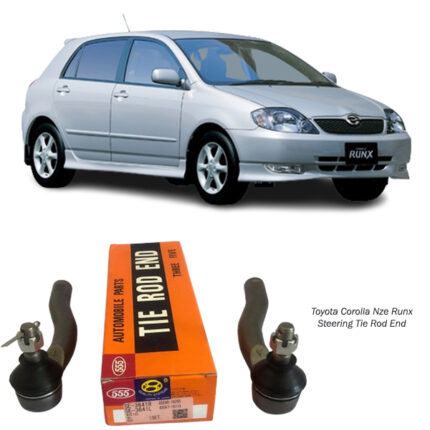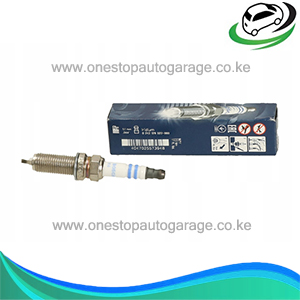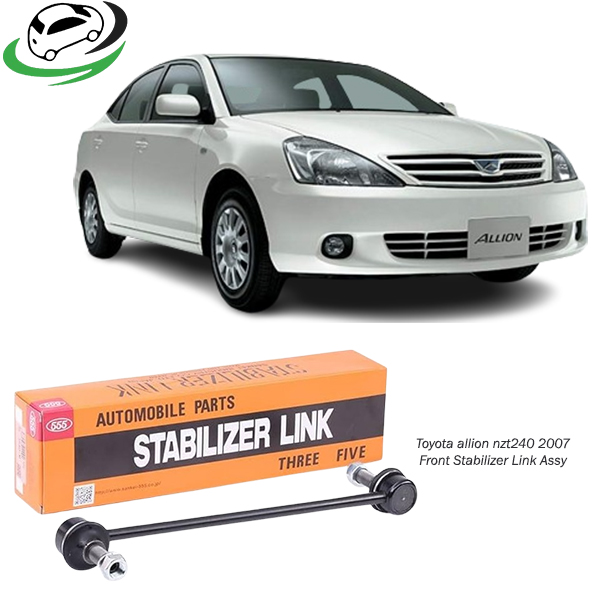-9%
Get Toyota allion nzt240 2007 Front Stabilizer Link Assy SL3640 in Kenya
The Front Stabilizer Link Assembly, also commonly referred to as the sway bar link, is an essential component of a vehicle’s suspension system. It plays a crucial role in maintaining the vehicle’s stability, especially during cornering, by helping to reduce body roll and improve handling. This component connects the stabilizer bar (also called the sway bar or anti-roll bar) to the suspension system and ensures that the forces generated during cornering or maneuvering are evenly distributed across the wheels, providing a safer, more balanced ride.
In this article, we’ll dive into the construction, function, benefits, common signs of wear, and maintenance requirements of the front stabilizer link assembly.
1. Understanding the Role of the Front Stabilizer Link Assembly
The front stabilizer link assembly is part of the stabilizer bar setup, which is critical for vehicle stability. The stabilizer bar runs across the width of the vehicle, connecting the left and right sides of the suspension. The stabilizer link assembly connects the stabilizer bar to the suspension control arms or struts, depending on the vehicle’s suspension design.
During a turn, the suspension on the outer side of the vehicle compresses while the suspension on the inner side extends. The stabilizer link assembly works with the stabilizer bar to transfer some of this force from one side to the other, reducing the vehicle’s tendency to roll. This ensures that all four wheels maintain optimal contact with the road, improving grip and safety.
2. Construction and Design of the Front Stabilizer Link Assembly
The stabilizer link assembly is typically constructed with:
- Metal Rod or Bar: The main body of the stabilizer link is often made from steel or aluminum for durability. It usually has threaded ends that connect to the stabilizer bar and the suspension.
- Ball Joints or Bushings: Each end of the stabilizer link usually contains a ball joint or bushing, which allows for flexibility and movement as the suspension articulates. Ball joints are common in more modern assemblies, providing a wider range of motion and increased durability. Bushings are generally made of rubber or polyurethane, which dampens vibrations and reduces noise.
The stabilizer link assembly is designed to handle lateral forces and significant stress, as it takes on a lot of pressure from the road surface, especially during aggressive driving or off-road conditions. Over time, these components can wear out due to constant motion and exposure to the elements, leading to diminished handling and stability.
3. Functions of the Front Stabilizer Link Assembly
The main functions of the front stabilizer link assembly are:
- Reducing Body Roll: The assembly minimizes the rolling motion of the body when the vehicle is in a turn, keeping the car level and improving stability.
- Enhancing Handling and Stability: By distributing forces across the suspension, the stabilizer link assembly ensures that all four tires maintain better contact with the road surface, enhancing handling and grip.
- Improving Passenger Comfort: The reduction in body roll makes for a smoother ride, especially noticeable when making sharp turns or driving on uneven terrain.
- Supporting Tire Longevity: Stabilizer links help maintain even pressure on the tires by balancing the vehicle, which helps in reducing uneven tire wear.
4. Advantages of a High-Quality Front Stabilizer Link Assembly
Investing in a high-quality stabilizer link assembly offers several benefits:
- Better Handling and Responsiveness: With a reliable stabilizer link assembly, drivers can expect more predictable and responsive handling, especially during quick maneuvers or turns.
- Increased Vehicle Stability: Properly functioning stabilizer links contribute to a balanced and stable ride, which is essential for vehicle control and safety.
- Extended Suspension Life: High-quality stabilizer links reduce the strain on other suspension components, such as the control arms and shock absorbers, by distributing forces more effectively.
- Quieter Ride: New or well-maintained stabilizer links eliminate rattling noises and vibrations that may be caused by worn or loose components, improving overall ride comfort.
5. Signs of a Worn or Failing Front Stabilizer Link Assembly
Like all suspension components, stabilizer links are subject to wear and will eventually need replacement. Common signs of a worn or failing stabilizer link assembly include:
- Clunking or Rattling Noises: A common sign of a worn stabilizer link is a clunking or rattling noise, especially noticeable when going over bumps, rough roads, or making sharp turns.
- Poor Handling: If the vehicle feels less stable, especially in turns or during quick lane changes, it may indicate a problem with the stabilizer link assembly.
- Increased Body Roll: Worn stabilizer links can lead to excessive body roll during cornering, which makes the vehicle feel less secure and increases the risk of losing control.
- Uneven Tire Wear: A failing stabilizer link may cause alignment issues or uneven forces on the suspension, leading to premature or uneven tire wear.
- Visible Wear or Damage: During visual inspection, you may notice cracks in the rubber bushings or loose ball joints, which are signs that the link is wearing out and needs replacement.
6. Causes of Front Stabilizer Link Wear and Failure
Stabilizer link assemblies can wear out for various reasons, including:
- Regular Wear and Tear: Stabilizer links are constantly in motion as the suspension articulates, which leads to gradual wear, especially in high-mileage vehicles.
- Exposure to Harsh Elements: Stabilizer links are exposed to dirt, road salt, water, and other environmental elements that can accelerate corrosion and degradation.
- Frequent Heavy Loads: Vehicles carrying heavy loads or subjected to aggressive driving conditions place additional strain on suspension components, including the stabilizer link.
- Lack of Lubrication: In some cases, stabilizer links with ball joints require lubrication to maintain smooth movement. A lack of lubrication can accelerate wear and reduce flexibility.
7. Maintenance and Replacement of Front Stabilizer Link Assembly
The stabilizer link assembly is generally low-maintenance but should be inspected regularly, especially if you notice any signs of wear or noise from the suspension. Here’s what you need to know about maintenance and replacement:
- Regular Inspection: It’s recommended to have the suspension components, including stabilizer links, inspected during routine maintenance, especially if you drive on rough terrain frequently.
- Replacement Frequency: Stabilizer links typically need replacement every 50,000 to 100,000 miles, though this can vary based on driving conditions and vehicle type.
- Choosing Replacement Parts: When replacing stabilizer links, it’s often best to opt for OEM (original equipment manufacturer) or high-quality aftermarket parts. Polyurethane bushings or heavy-duty ball joints can provide longer life and better performance than standard rubber bushings.
- Professional Installation: While replacing stabilizer links can be a DIY task for some, it often requires special tools and knowledge to ensure the correct torque and alignment. Professional installation can help prevent premature wear due to improper installation.
8. Upgrading to Performance Stabilizer Link Assemblies
For drivers seeking enhanced performance, upgrading the stabilizer link assembly can be beneficial. Here’s why:
- Polyurethane Bushings: Polyurethane bushings offer a stiffer and more durable alternative to rubber, ideal for performance driving. These bushings provide improved handling but may transmit more vibrations to the cabin.
- Heavy-Duty Links: Heavy-duty stabilizer links with reinforced materials and stronger ball joints are available for high-performance or off-road applications, providing improved durability under stress.
However, performance upgrades may also make the ride slightly stiffer and noisier, so they are generally recommended for enthusiasts who prioritize handling over comfort.
9. Conclusion
The front stabilizer link assembly may be a small component, but its role in the vehicle’s suspension system is essential for safe and comfortable driving. By connecting the stabilizer bar to the suspension, the stabilizer link assembly helps reduce body roll, improves handling, and contributes to overall vehicle stability. Keeping this component in good condition will ensure optimal suspension performance, enhancing both safety and ride comfort.
Regular inspection, timely replacement, and careful choice of replacement parts can ensure that the stabilizer link assembly continues to support your vehicle’s suspension effectively. Whether for everyday driving or performance upgrades, a quality front stabilizer link assembly is integral to a well-functioning and reliable suspension system.
Follow us on Facebook for more parts.



